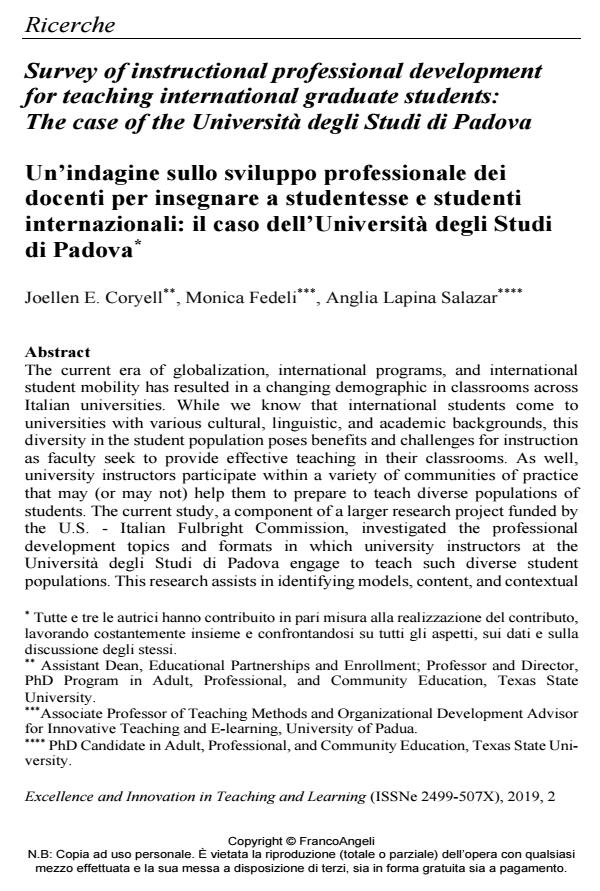Survey of instructional professional development for teaching international graduate students: The case of the Università degli Studi di Padova
Journal title EXCELLENCE AND INNOVATION IN LEARNING AND TEACHING
Author/s Joellen E. Coryell, Monica Fedeli, Anglia Lapina Salazar
Publishing Year 2019 Issue 2019/2
Language English Pages 20 P. 22-41 File size 323 KB
DOI 10.3280/EXI2019-002002
DOI is like a bar code for intellectual property: to have more infomation
click here
Below, you can see the article first page
If you want to buy this article in PDF format, you can do it, following the instructions to buy download credits

FrancoAngeli is member of Publishers International Linking Association, Inc (PILA), a not-for-profit association which run the CrossRef service enabling links to and from online scholarly content.
The current era of globalization, international programs, and international student mobility has resulted in a changing demographic in classrooms across Italian universities. While we know that international students come to universities with various cultural, linguistic, and academic backgrounds, this diversity in the student population poses benefits and challenges for instruction as faculty seek to provide effective teaching in their classrooms. As well, university instructors participate within a variety of communities of practice that may (or may not) help them to prepare to teach diverse populations of students. The current study, a component of a larger research project funded by the U.S. - Italian Fulbright Commission, investigated the professional development topics and formats in which university instructors at the Università degli Studi di Padova engage to teach such diverse student populations. This research assists in identifying models, content, and contextual factors of informal and formal faculty development currently in Italy. The findings offer culturally nuanced insights for instructor professional development during a period of internationalization efforts and increased international student mobility.
Keywords: Internationalization in higher education, teaching in higher education; teaching international students, faculty development, instructional development
Joellen E. Coryell, Monica Fedeli, Anglia Lapina Salazar, Survey of instructional professional development for teaching international graduate students: The case of the Università degli Studi di Padova in "EXCELLENCE AND INNOVATION IN LEARNING AND TEACHING" 2/2019, pp 22-41, DOI: 10.3280/EXI2019-002002